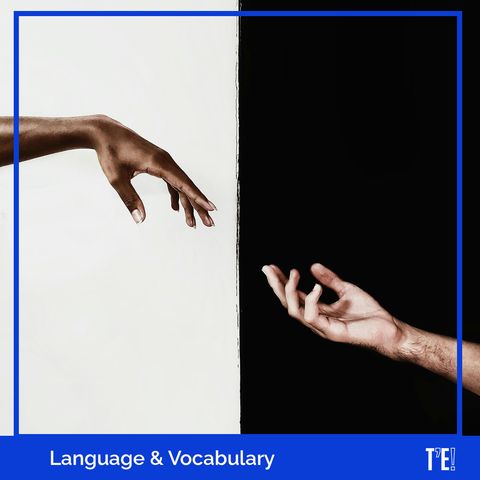Lend & Borrow
13 giu 2024 ·
5 min. 2 sec.

Scarica e ascolta ovunque
Scarica i tuoi episodi preferiti e goditi l'ascolto, ovunque tu sia! Iscriviti o accedi ora per ascoltare offline.
Descrizione
Hello and welcome to this podcast brought to you by That’s English! The Spanish Ministry of Education’s official distance learning English course. To find out more about That’s English! go...
mostra di più
Hello and welcome to this podcast brought to you by That’s English! The Spanish Ministry of Education’s official distance learning English course. To find out more about That’s English! go to www.thatsenglish.com or contact your local Official School of Languages. One set of confusing verbs for Spanish learners of English is how to use the verbs lend and borrow. The confusion lies in the fact that in the Spanish language the translation for lend and borrow is prestar for both. To better understand these meanings, we can translate borrow as pedir prestado as well. · Te presto mis gafas de sol, ahora no las necesito. (I’ll lend you my sunglasses, I don’t need them now) · ¿Me prestas tus gafas de sol? (Can I borrow your sunglasses?) So, let’s understand the difference in meaning of the two, starting with lend. Lend is an irregular verb and means to give something to someone, expecting to get it back. Its past simple and participle form is lent. Let’s look at some example sentences: · I lent Carla the book as she really wanted to read it. · He never lends me his pen or pencil in class, even though we’re best friends and he knows that I don’t have one. On the other hand, borrow is a regular verb and means to obtain something from someone, intending to give it back after a short time. Let’s look at how we use borrow considering the previous sentences as our context. · Carla borrowed the book from me because she really wanted to read it. · I can never borrow a pen or pencil from Jimmy because he doesn’t let me. Be careful with the use of lend and borrow in questions. When you give something, you lend it. So, you can ask if someone will lend you something, like this: · Can you lend me the book, please? I really want to read it. Notice that it follows with the object pronoun me. That translates to: ¿Puedes prestarme el libro, por favor? And when you receive something, you borrow it. So, you can ask to borrow something like this: Can I borrow the book please? I really want to read it. Here no object pronoun follows the verb. The Spanish translation is: ¿Me prestas el libro por favor? Let’s finish with a few more examples. Can you lend me the book? Lend me. I don’t have the book, you have it and I’m asking if I can borrow it. Patricia always lends her sister things. Lends her sister. Her sister borrows clothes from Patricia. And finally, if you need financial help with a loan, un préstamo, or a mortgage, una hipoteca, from the bank then these examples would be useful to learn: The bank has lent us the money to buy our house, so now we have a big mortgage. Lent us. With borrow it is: We borrowed the money from the bank to buy our house. (Once again, remember, no object pronoun directly follows borrow). If you would like to study more on this topic then please see the corresponding That’s English! blog post. Thanks for listening! We hope you have enjoyed this podcast, brought to you by That's English! Please follow us on social media. We look forward to hearing from you. Bye for now!
mostra meno
Informazioni
| Autore | That's English! |
| Sito | - |
| Tag |
-
|
Copyright 2024 - Spreaker Inc. an iHeartMedia Company
